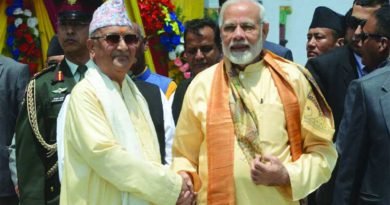No laxity
All signs say the third wave of COVID-19 is on its way; India must keep its guard up
The second wave of COVID-19 is supposed to be abating since June 25, but the sense of relief is not reflected in either the total number of cases or the observations of the anti-pandemic strategists. The national count of fresh cases is over 39,000 and rising. And the empowered strategy group tells the Government not to allow the count to cross 50,000 a day. Should this be taken as a warning to the Government that the third wave may well be on the way? Yes, it is. For the first time, the strategists have given an early alert. For the first time, too, the country’s anti-COVID policy is being directed by scientific rather than administrative considerations. The earmarked limit sends two messages. One, that the second wave has abated as much as it can in the country though the surge is largely limited to two States — Kerala and Maharashtra. Two, the breach of the 50,000-case limit will mark the beginning of the stress on medical infrastructure. The strategists appear to be playing it safe and assuming that the peak of a future wave would see four-five lakh cases a day, nearly 10 times the new case limit. That should give the Union and the State Governments a clear picture of how much additional infrastructure they should organise in the next couple of months.
The example of the UK should show how they are dealing with a situation where the daily cases have crossed 50,000. People are testing positive at an alarming rate. Nearly 650,000 people are estimated to have tested positive in the second week of July. Admissions are rising in hospitals. And yet, the Government has eased all restrictions. Social distancing is no longer mandatory, face masks are no longer required by law, and the ban has been lifted on large gatherings of people. The British Government is facing criticism for the complete unlock, but its confidence perhaps stems from two sources. One, that over 46 million people in the UK or 87.6 per cent of the adults have received their first dose and 35.5 million, or 67.5 per cent, are fully vaccinated. The high number of vaccinations and the presence of antibodies in the infected unvaccinated is said to reduce the severity of infection and the need for hospitalisation, and lower the chances of death. Secondly, thousands of people using the NHS COVID App are receiving self-isolation alerts every day, informing them they have been in close contact with a positive case. The UK is highly vaccinated and has rid itself of safety protocols and the cases are growing. Indian vaccination levels are low and the protocols are violated more and the cases are growing. This goes on to show that an either-or attitude towards vaccination and safety measures is a sure-shot invite to a third wave of the pandemic. The mandatory requirement is a combination of both and that is what the Indian strategists should emphasise on.
Source: PTI




